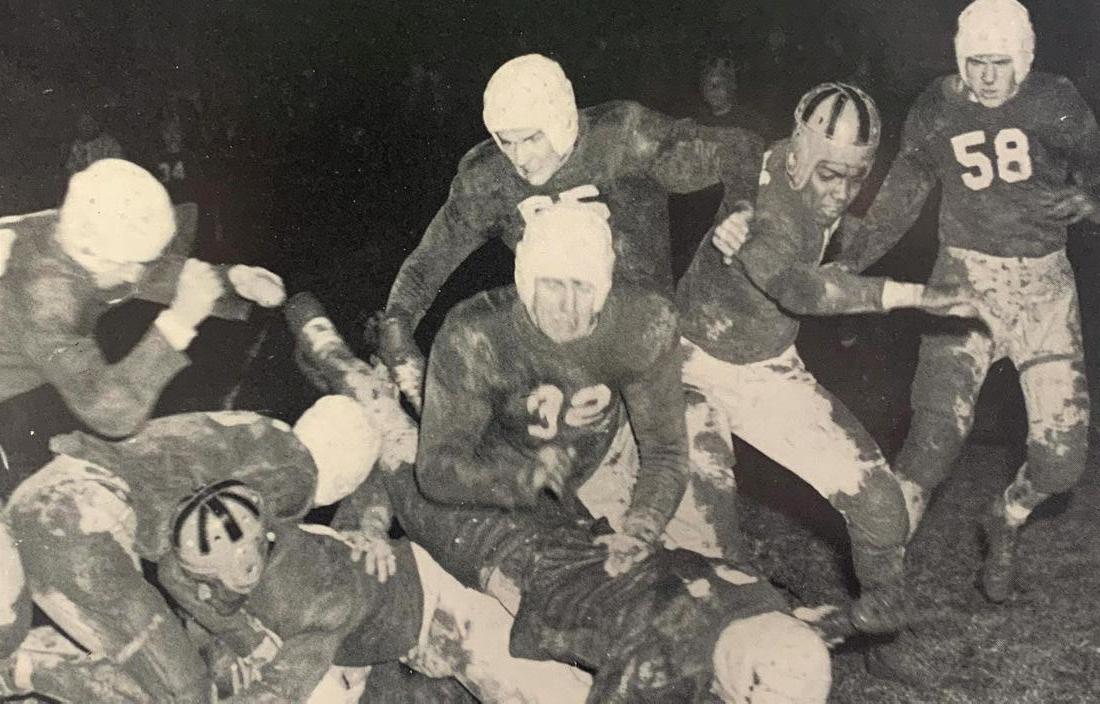more than a game One of the most storied rivalries in the history of Washington, D.C. interscholastic football occurred in the 1940s when the Eagles of Gonzaga twice faced the mighty barnstorming Boys Town team from Omaha, Nebraska. Boys Town, an orphanage founded by the legendary Father Edward J. Flanagan, had only a few years before been the subject of a feature film starring Spencer Tracy and Mickey Rooney. In the following article, Gonzaga alumnus and award-winning documentarian Luis Blandon ’81 recounts the highlights of two epic games—the impact of which went well beyond the gridiron.
O
n Sunday, November 7, 1943 as World War II raged, Gonzaga students arrived at Griffith Stadium by foot, car, trolley, and bus, clad in clothing that made them look like younger versions of their fathers. Unsure of where they would be in a year, they filed into Griffith to cheer on their beloved Eagles. Hype had been building since the October game announcement with outlets like the Washington Post publishing such hyperbole as “…the greatest schoolboys intersectional football treat in District history has been booked into Griffith Stadium.” Gonzaga was playing the celebrated Father Flanagan’s Boys Town of Nebraska. Founded in 1917 in Omaha, Nebraska by a young Irish priest named Father Edward J. Flanagan, Father Flanagan’s Home for Boys was an orphanage and school that welcomed all boys, regardless of their race or religion. The game in November 1943 was the culmination of several days of fundraising by Father Flanagan, including speeches at the Touchdown Club and Uptown Theatre, and visits with General John J. Pershing and wounded soldiers at Walter Reed Hospital. Dignitaries such as Eleanor Roosevelt were in the stands along with several former Gonzaga athletes. As Boys Town was being feted by politicians, Gonzaga’s motto, according to an article in the Washington
26
gonzaga.org
A photo of the Gonzaga Boys Town game from the 1946 Aetonian.
Post, was “We concede Boys Town the edge in publicity, but we’ll try for touchdowns.” The star for Boys Town, which held secret three-hour practices at Griffith in the lead-up to the game, was African-American player Clarence Adams, celebrated as one of the best players in the Midwest. The game would mark one of the first integrated high school competitions in segregated Washington—a fact largely ignored by the local press. To prepare for the game, Gonzaga’s Coach Samuel (“Bo”) Richards led practices at the Eagles’ athletic field at 34th and Benning Road, NE. Richards planned to use, according to an article in the Post, “the triple threat brilliance of Angelo Zanger and its defense behind two of the District’s finest schoolboy guards in years, Jim Nalls and Tony Museline.” Before a rambunctious crowd of 12,000, Gonzaga jumped to a first quarter lead. Recovering a fumble at midfield, Gonzaga drove as, according to The Evening Star, “Zanger, [Bill] Murphy and [Joe] Hickson shared the ground-gaining labors of that hike.” The Eagles scored when Hickson “smashed through the marker” for two yards for a 6-0 lead. Boys Town took the kickoff to their 30. “After passes, runs and bucks, slashing advances off a skilled T-formation attack,” quarterback Dickie Thomas connected with Leo
Virgil for a 20-yard touchdown that, the Washington Post said, “caught the Eagles flatfooted.” Boys Town missed the extra point as the first quarter ended in a tie. Five minutes into the third, Boys Town scored a touchdown, shifting the momentum in their direction. Gonzaga threatened late in the third but fumbled. With four minutes left in the game, the Eagles drove with a combination of runs by Zanger and Hickson but were stalled at the Boys Town 25. According to an article in the Washington Times Herald: “Then came the heartbreaker for Gonzaga” on the fourth down when Coakley broke free as Zanger “seeking rescue from defeat by air” threw the ball. Covering Coakley, Adams tipped the pass and the ball bobbled off Coakley’s grasping hands. The game was over.
O
n November 30, 1945, a rematch was played at the University of Maryland’s Byrd Stadium. This time around, Joe Kozik was the Gonzaga head coach. Famed Washington sportswriter Shirley Povich, using the language of the time, saw an additional importance to the game: “when Father Flanagan’s Boys Town football team opposes Gonzaga …Ken Morris, a colored lad will be the starting fullback for Boys









